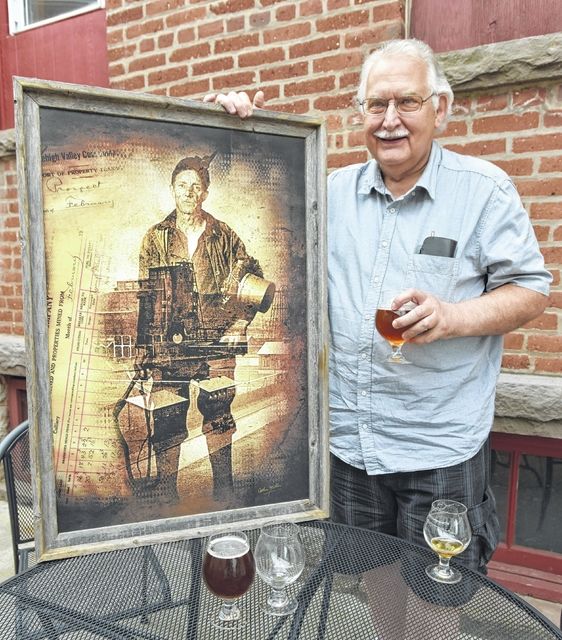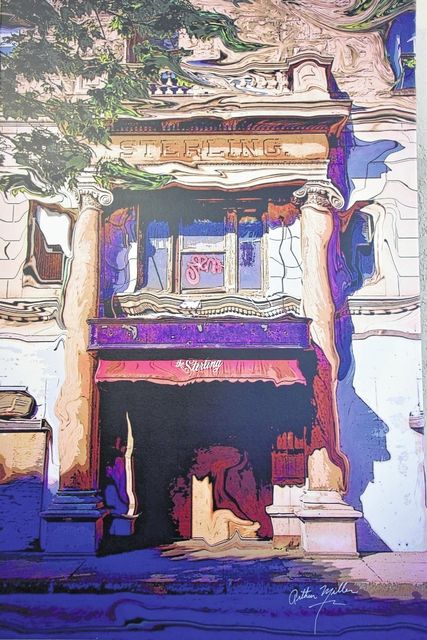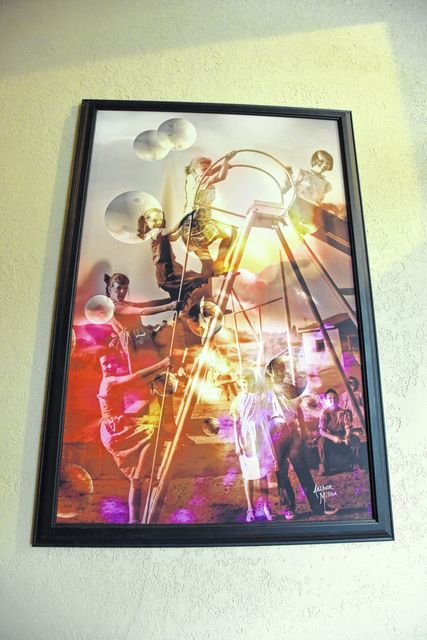Click here to subscribe today or Login.
Parsons native Arthur Miller started collecting old photographs as a high school student in the early ’60s. He’d visit antique stores and Salvation Army locations to hunt for photos of coal miners, coal breakers and other subjects related to the industry. As he got older, Miller expanded his hunt to glass negatives and original prints. He estimates his collection of negatives at over 5,000 with a majority of the images taken locally.
“My father was born in 1898,” Miller said.” When he was 11, he went to work as a breaker boy and he stayed in the mines his whole life; I don’t think he ever worked outside of the mines. His father before him was a coal miner and his father before him was a coal miner, originally from England. That’s the main reason, but of course, coal was the valley. It was the economic background that fed everything but towards the late ’50s, coal was on its way out. That industry faded but I really have a love for it; I like the old structures.”
Miller, 69, began exploring the artistic world as a student at James M. Coughlin Junior-Senior High School in Wilkes-Barre under the guidance of his art teacher, Andy Palencar. A Pratt Institute and Columbia University graduate whom Miller described as having an extensive knowledge of old painting techniques, Palencar would provide extra instruction to students serious about the craft. Miller became involved with painting and photography and, when it came time for him to attend college, he put the skills he learned during that extra instruction time to use.
“We were a rather poor family,” Miller said. “I couldn’t afford college, so my next choice was photography. I agreed to join the Navy if they would send me to photography school, so they sent me through school in Pensacola, Florida. After that, our duty station was in Scotland and my first assignment was to shoot John Paul Jones’ birthplace. I was 18 at the time so it was kind of a heady thing … pretty cool.”
After serving in Scotland for three years, Miller returned home and enrolled at Luzerne County Community College for commercial art. He also spent time with a friend from high school who would become his brother-in-law.
“We met through my brother in the late ‘60s,” Miller’s wife, June, said. “Art came over our house all the time. He and my brother, Gene, used to play the guitar all the time and one day he asked me out and that’s history.”
While attending LCCC, Miller was asked to set up its photography department, so he designed and taught the photography curriculum. He also ran a studio out of the home he and his wife shared in downtown Wilkes-Barre. When the Agnes Flood hit in 1972, he, his wife and his hobby were all changed.
“It really affected us,” June said of the devastation caused by the flood. “Our first daughter was just a baby. We lived on the corner of South River and Academy (in Wilkes-Barre). Art had a studio there, Spectrum Studio, and did weddings and portraits and public relations for Wilkes University. It really did change our lives. We put things up high on tables but it didn’t work too well. We lost a lot of things.”
“We had 14 feet of water and most of everything I had went down the river,” Arthur added. “That was pretty depressing because I lost it all — everything I did in the Navy except for about 5 percent of stuff I had stored up higher. That was a bad scene.”
In the years after the flood, the Millers worked (June held various positions, including a 20-year tenure with Verizon Wireless), raised three children and rebuilt the collection of old photos and prints. Miller also cultivated a friendship with artist and fellow LCCC educator Howard Purcell, cover illustrator for the first issue of DC’s “Green Lantern (1941).”
“He was a really good illustrator and he had an impeccable sense of design,” Miller said. “If I had any problems, I could ask him and he would very honestly tell me what was wrong. He would work on his comics late at night from midnight until 4 a.m. I used to sit with him in his studio and shoot the breeze while he was working. Howard was probably one of the most fair-minded, helpful and honest persons I’ve ever met in my whole life and he influenced me that way.”
Later, Miller helped to establish Wilkes-Barre’s Third Friday event series as part of the Wyoming Valley Art League and served as the league’s president. He also taught at Marywood University. Now retired, Miller has more time to devote to his art, which adorns the walls of Breaker Brewing Company, which his son Chris co-owns.
“Recently he’s been more and more creative,” Chris said of his father. “The last few years he’s had more time to do what he wants to do.”
When Chris and his business partner, Mark Lehman, agreed on the name Breaker Brewing Company, Miller’s extensive collection of antique mine-themed photos influenced their decision. Today, pieces like “The Breaker Boys,” an old photo of children working inside a coal breaker separating coal, hangs in the brewery, alongside some of Miller’s other works. Some, like the shot of a playground in Pittston, were purchased by Miller during one of his hunts and digitally manipulated to include a rainbow and bubbles. Others, like the photo of Wilkes-Barre’s bygone Hotel Sterling, were taken before he began utilizing digitized photos as his canvas.
“It’s my art background,” Miller said. “It’s a crossover between photography and art, especially since the digital age that opened the doors for photographers to really express themselves because you can manipulate photographs beyond anything you can think of. Rather than doing a painting, I either use one of my old photos or the historical photos and just have a lot of fun with it. It just fit me like hand in glove.”
Chris likened the brewery to a functional gallery for his father’s art; the work goes up, sells and is, in turn, replaced with new pieces that fit the brewpub’s aesthetic. He calls it a win-win since Miller’s pieces add atmosphere and create conversation on their way towards an eventual sale. Those sales are often facilitated by June.
“I do the phone because he doesn’t like to be on the phone,” June said. “He’s always doing something and I’m always there behind the scenes.”
“You know, the main thing for me is I actually enjoy creating an original piece of artwork, putting it out there and seeing what the response is,” Miller added. “That’s the kick for me. I’ve been fortunate in my life; I’ve sold quite a bit and people seem to like what I do. That’s pretty much enough for me.”







